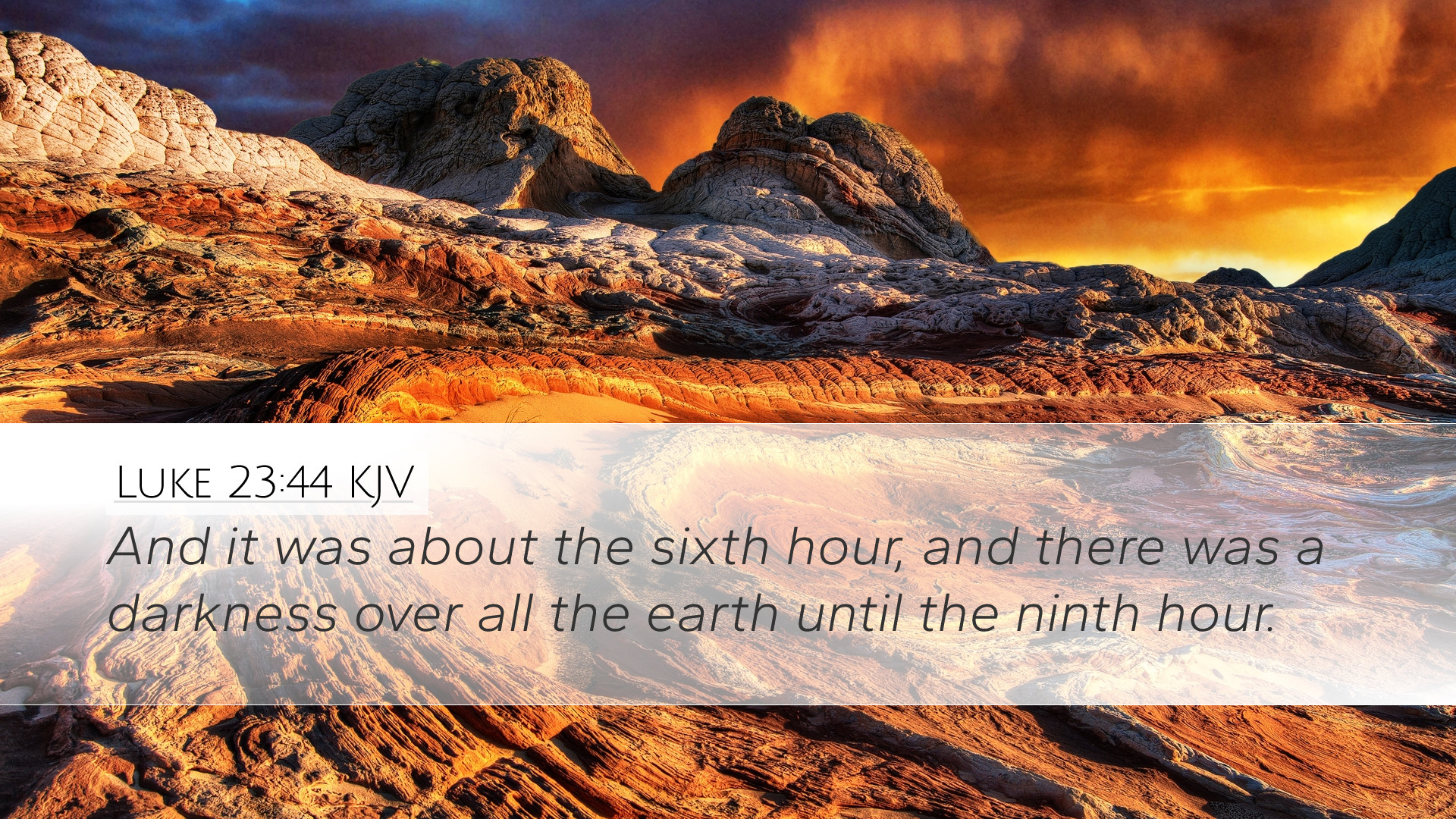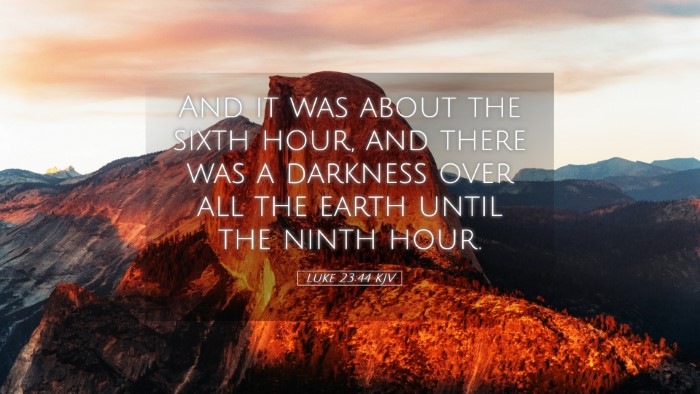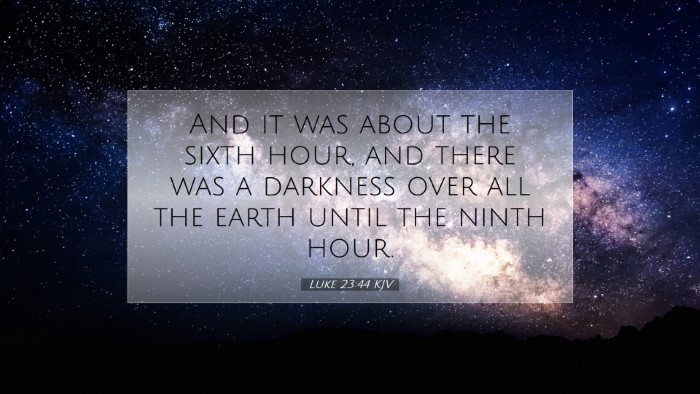Commentary on Luke 23:44
Luke 23:44 states: "And it was about the sixth hour, and there was a darkness over all the earth until the ninth hour." This moment in the narrative of Jesus' crucifixion holds profound theological significance, drawing on rich historical and prophetic imagery. In this commentary, we will explore the insights from several public domain commentaries, providing a comprehensive understanding of this crucial verse.
Contextual Background
To fully appreciate the weight of this verse, we must first understand the contextual framework of Luke's Gospel. This passage takes place during the crucifixion of Jesus, a pivotal event in Christian theology, marking the climax of His earthly ministry.
The Significance of Time
Luke specifies that this period occurs at the sixth hour, which corresponds to noon in a Jewish timekeeping system. The subsequent darkness, lasting until the ninth hour, serves as a supernatural sign accompanying the death of the Messiah.
Theological Implications of Darkness
The darkness that enveloped the land during these hours has been a topic of much theological reflection. Several commentaries provide insights into its implications:
- Matthew Henry: Henry interprets the darkness as a divine manifestation, commenting that it symbolizes God's wrath against sin. He notes that this supernatural event highlights the enormity of the sacrifice being made by Jesus. It serves as a visible reminder that something cosmic and foundational is occurring at this moment.
- Albert Barnes: Barnes connects the darkness with God’s lament over sin. He implies that as Christ bears the sin of the world, the physical ambiance mirrors the spiritual reality of separation from God—a concept that reflects the punishment that sin tempts humanity to endure. Barnes references Old Testament allusions to darkness as a sign of divine judgment.
- Adam Clarke: Clarke emphasizes the emotional and spiritual aspects of this moment, suggesting that the darkness was not only a physical occurrence but also a reflection of the sorrow and the weight of sin that Jesus was bearing. He draws parallels to prophetic declarations foretelling the obscuring of light in times of divine displeasure.
Symbolic Representations
The extent and duration of darkness signal important themes within Judeo-Christian theology:
- Cosmic Significance: Many scholars argue that the darkness represents a cosmic upheaval, indicating that the death of Christ is not merely an isolated historical event but a transformative moment in redemptive history.
- Fulfillment of Prophecy: Commentators reference prophecies from the Old Testament, such as Amos 8:9, which foretold a day of darkness. This darkness can be seen as a fulfillment of those prophetic utterances, affirming Jesus as the anticipated Messiah.
- Judgment and Grace: The duality of judgment and grace is vital here: while darkness symbolizes judgment due to sin, it also marks the moment of God's grace being extended through Jesus’ sacrifice.
Pastoral Applications
For pastors and theologians, the implications of this verse urge deeper reflection and application:
- Understanding Suffering: The darkness can serve as a reminder of the suffering that surrounds the human condition. Pastors can use this as a teaching moment to discuss the reality of suffering and God’s ability to bring purpose in pain.
- Encouragement in Darkness: The reality of Jesus experiencing darkness can provide comfort for individuals facing their dark times. It reaffirms that God enters into humanity's suffering, bringing hope even in periods of despair.
- Call to Spiritual Reckoning: The event encourages believers to reflect on their own spiritual lives and the weight of sin, prompting repentance and a renewed commitment to living in the light of Christ.
Conclusion
In Luke 23:44, the profound significance of darkness extending over the earth during the crucifixion of Jesus encapsulates themes of divine judgment, cosmic significance, and the depth of Christ’s sacrifice. Commentaries from Matthew Henry, Albert Barnes, and Adam Clarke provide essential insights that help contextualize this event within the larger narrative of Scripture. The darkness serves not only as an ominous sign but as an invitation to explore the depths of God's grace amid human suffering, and for scholars and pastors alike, it calls for profound reflection on the nature of sin and redemption.


